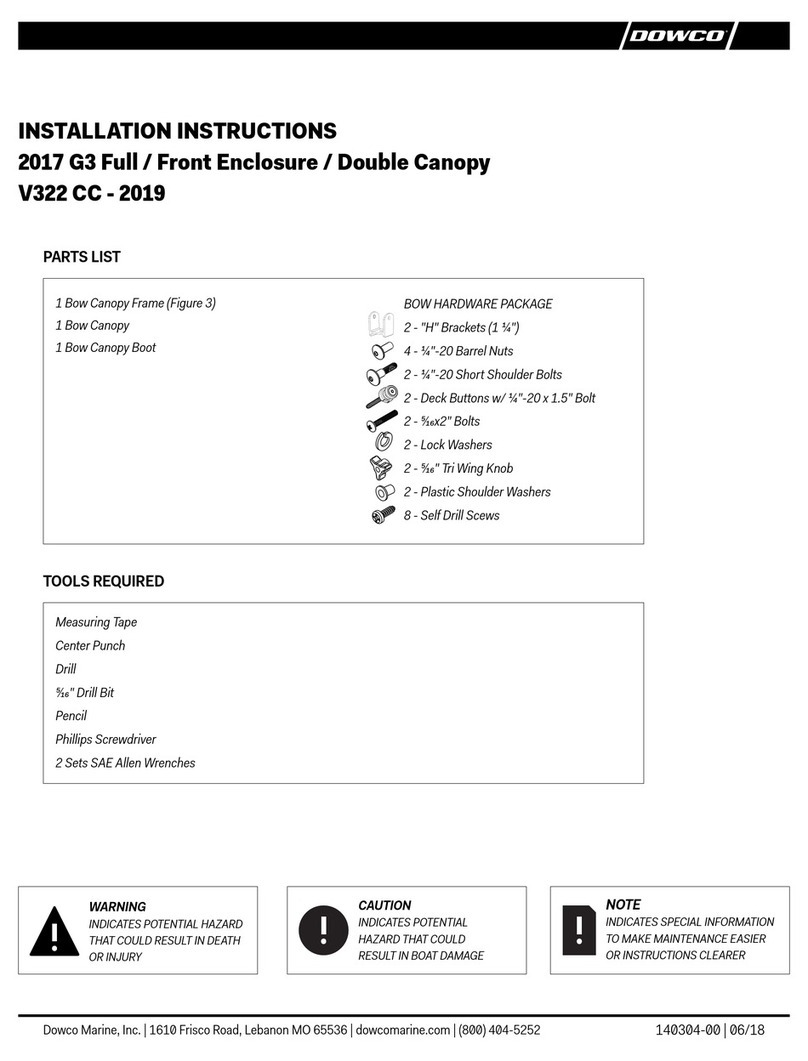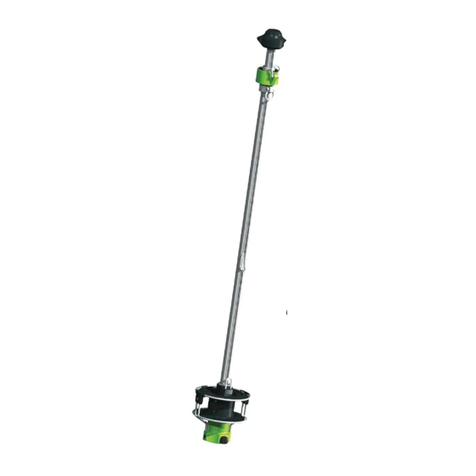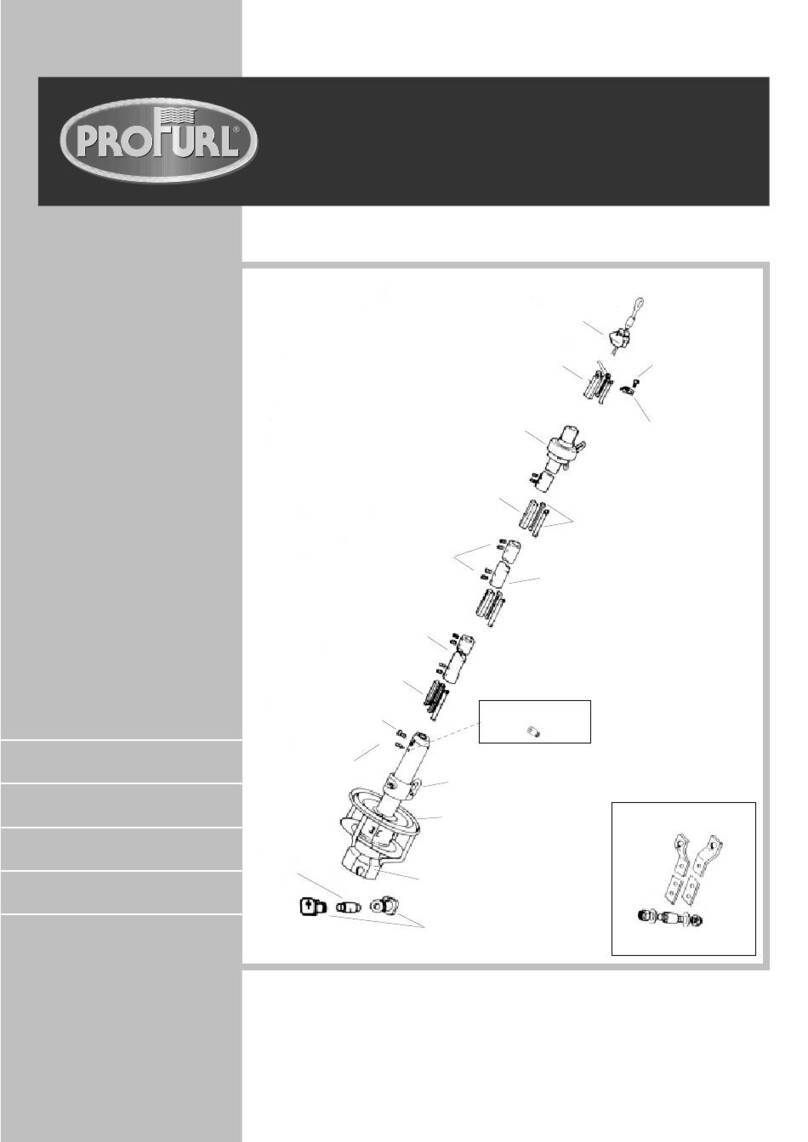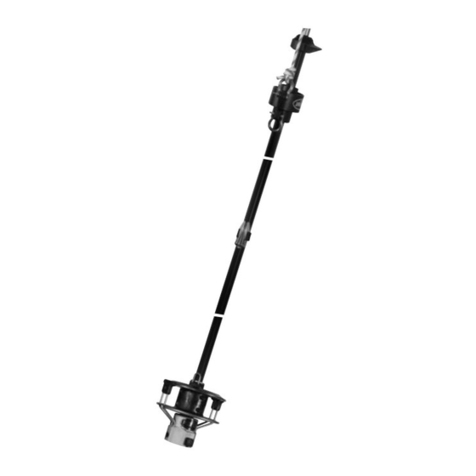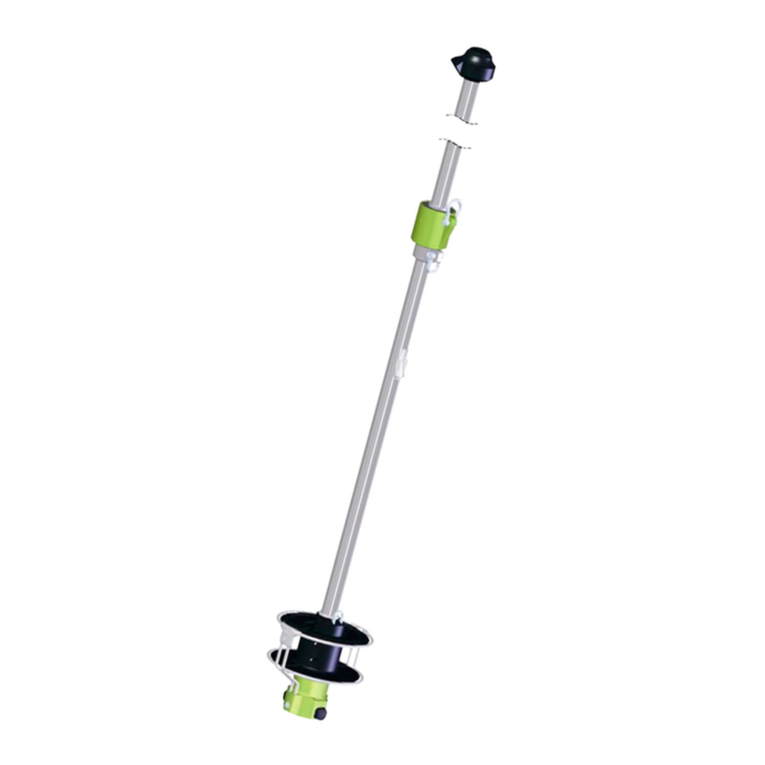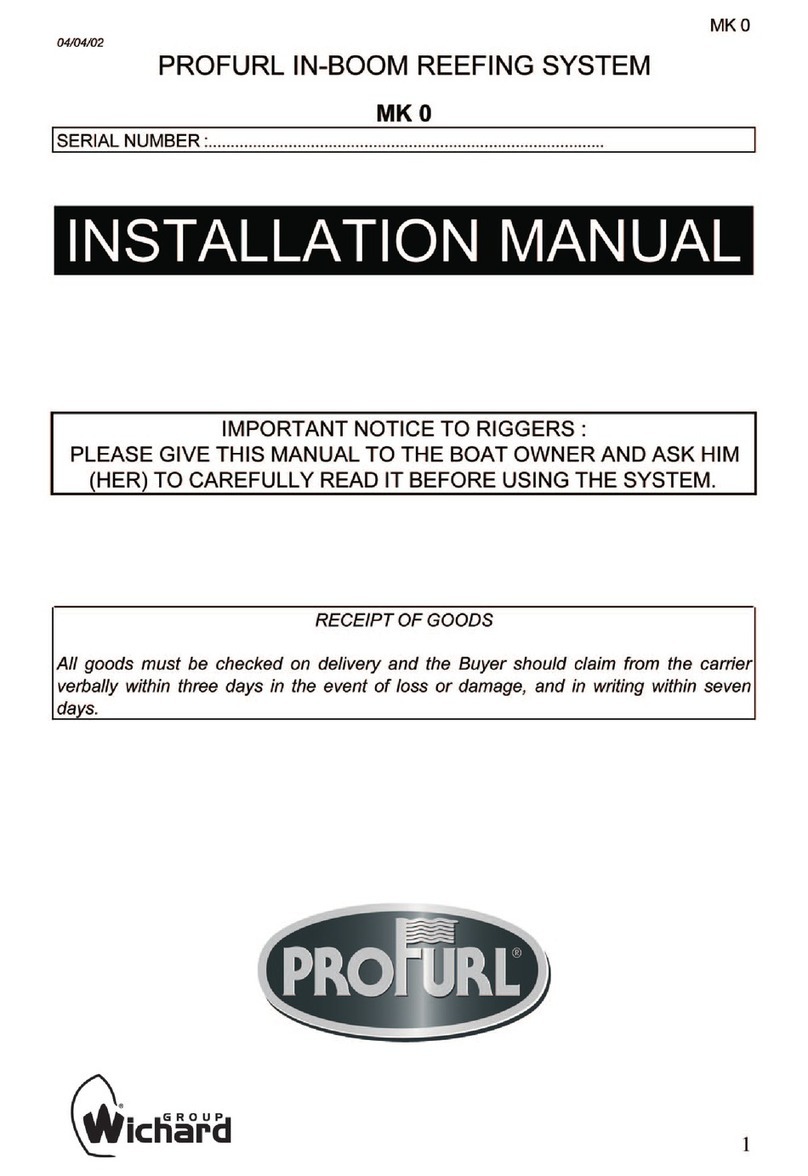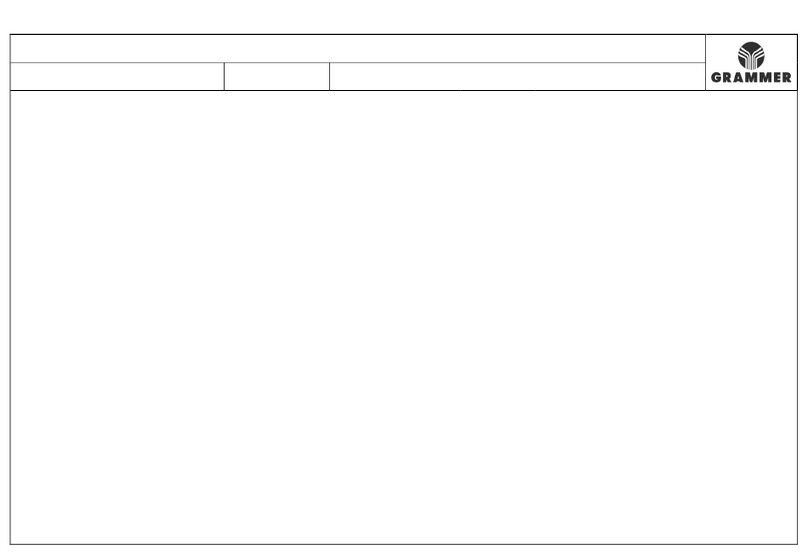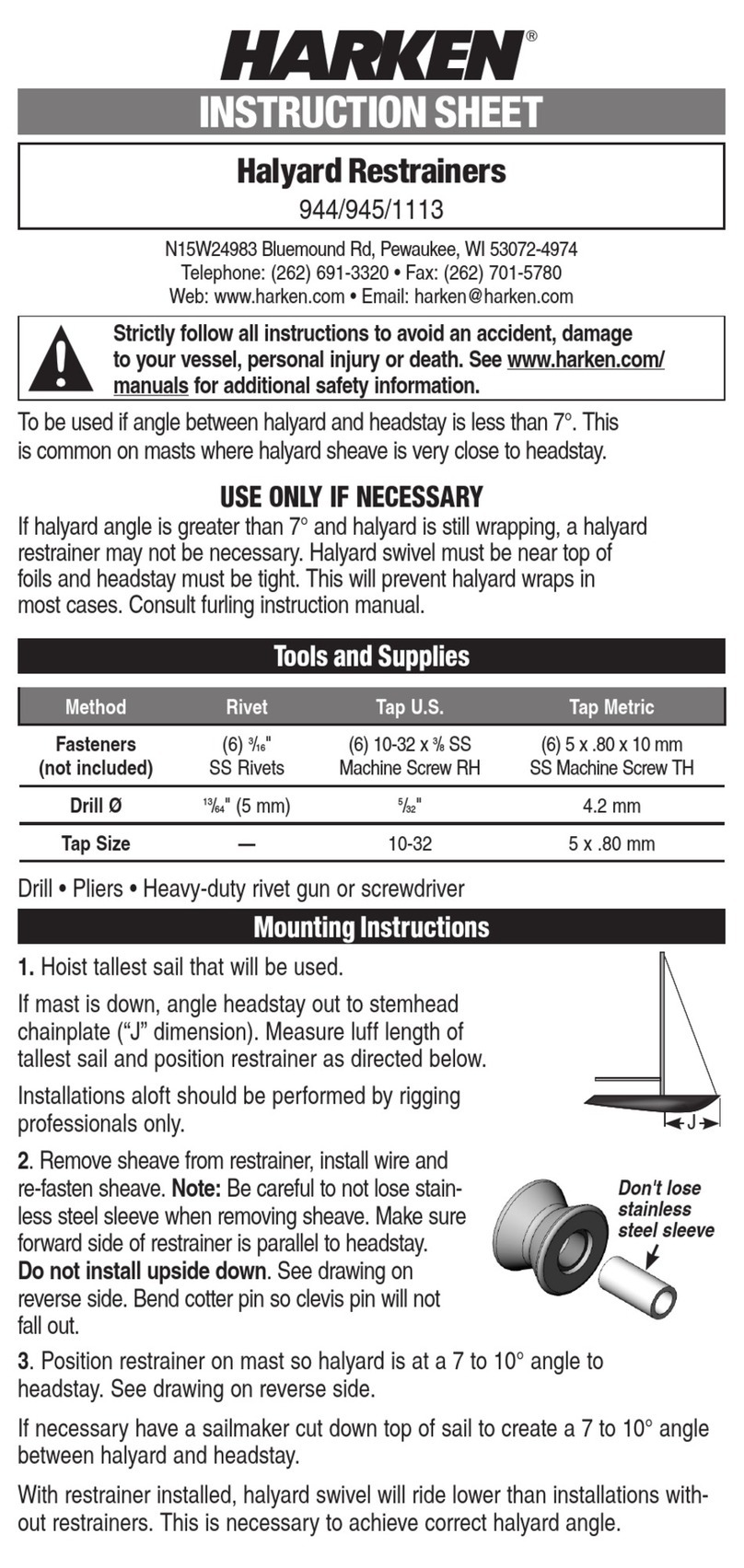
MK 1
4
I - GENERAL DESCRIPTION
Note : names in bold refer to parts identified on next page
The PROFURL in-boom furling system includes :
1. One set of luff profiles (1 and 2) articulated on the aft face of the mast .
There are 2 different kinds of luff profiles : one 0.60 m long feeder profile (1) on
which the feeder (3) is attached, and several 2 meters long normal luff profiles (2)
depending on the mainsail’s luff length. One of these 2 meters long normal luff
profiles (2) will be re-cut to length at its upper end to match the expected luff
length of the boat. The different luff profiles (1 et 2) are connected to each other by
mean of connectors/articulations (4), which are connected to articulation
brackets (5) attached on the aft face of the mast.
CAUTION : thearticulation brackets (5) have a stainless steel pin. Check the
difference with end brackets (6), which have Nylon flanges (55).
2. Articulation brackets (5) attached to the mast with 2slide screws (7) slipped in the
mast groove. Every slide screw (7) has a thread and a flat end going through a hole
of the articulation brackets (5). The thread of the slide screws (7) receives a
washer (33) and locknut (8) for attachment.
3. Connectors/articulations (4) also used to connect the different luff profiles (1 and
2), held by set screws (9). The lower end of the 0.60m longfeeder profile (1) will be
connected on thegooseneck articulation (10), thus allowing the luff profiles (1 and
2) to rotate together with the boom.
4. A sheave box (11) through which the mainsail halyard is passing. The sheave box
(11) will be fit at the top of the luff profiles (1 and 2). It is assembled on the end
brackets [2times (6)], themselves being attached by mean of slide screws (7) and
locknuts (8).
5. A gooseneck (12) fit on the mast with 2slide screws (7), and 2 gooseneck plates
(13) cambered at the mast shape before fitting, and which will be riveted onto the
mast with theconical head pop rivets (14) supplied.
6. A boom profile(15) which has been delivered either in 4 or 5 meters. It may be re-cut
to length when fitting to match the expected boom length.
7. A mandrel (16) which turns on bearings (17 and 18) fit on a bearing holder (19) at
the rear end of the boom, and on the drum bearing holder (21) front, turning around a
pin inserted in each of the boom end fittings (22 and 23). When re-cutting the
boom profile (15) to length, themandrel (16) should also be re-cut.
8. A drum boom end fitting (22). It includes the drum (21) fit onto the mandrel (16):
the drum being loaded with the furling line supplied, by pulling on the furling line and
releasing the mainsail halyard it will rotate themandrel, which will furl the sail.
9. 2 adjustablemainsheet bails (25). More mainsheet bails are optional.
10. A specialboomvang (27). It is attached :
- onto the mast by mean of aboomvang attachment, including an gooseneck (12)
attached onto the mast with 2 slide screws (7) locknuts (8) and 2 gooseneck
plates (13) which will be riveted on the mast with pop rivets (14) with conical head
supplied. The boomvang lower end will be attached onto an articulation eye (49)
rotating in the boomvang gooseneck (56).
- onto the boom with a boomvang hound (28).
11. A ball bearing block (52) to lead the furling line (51) to the cockpit.
12. A boom brake
